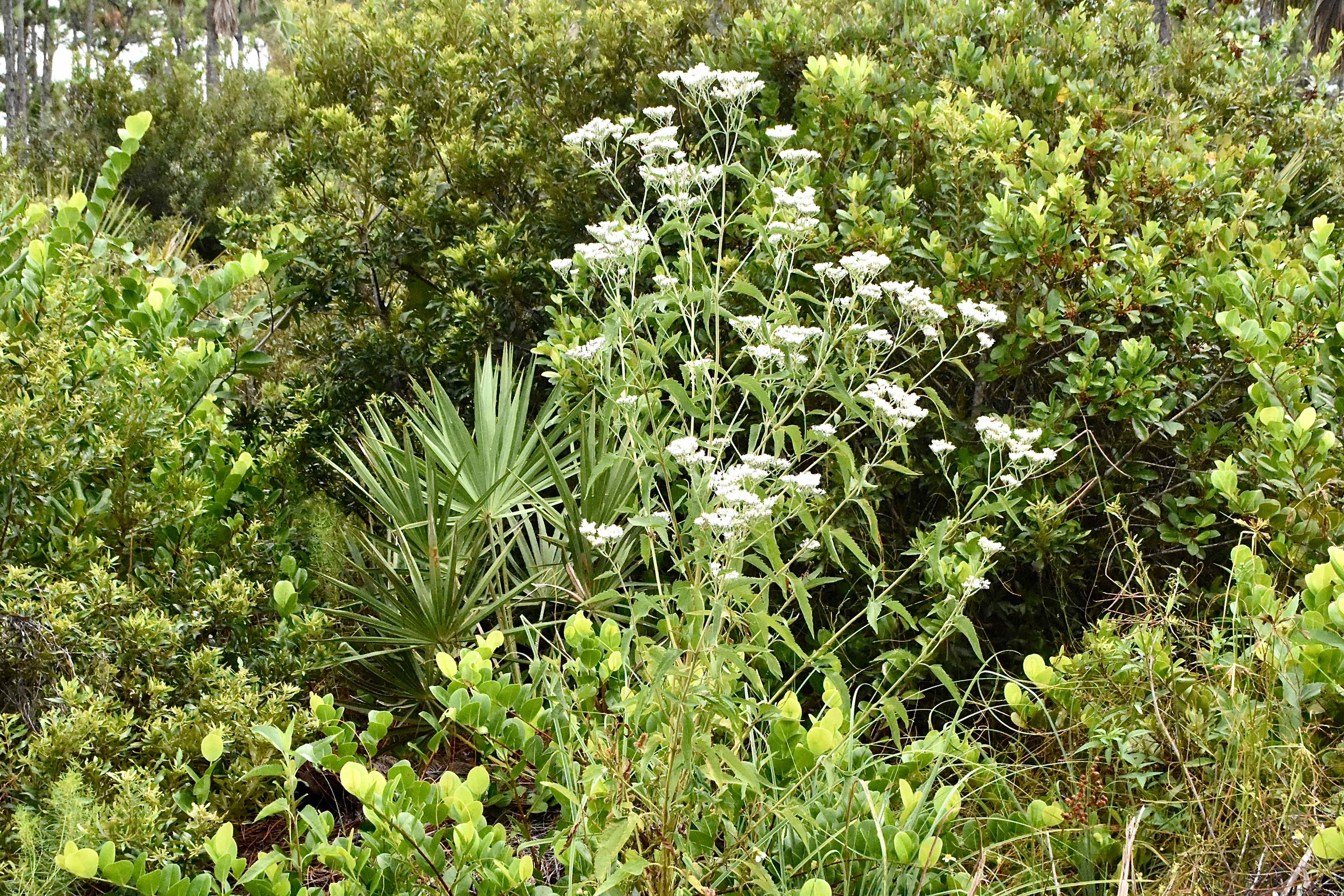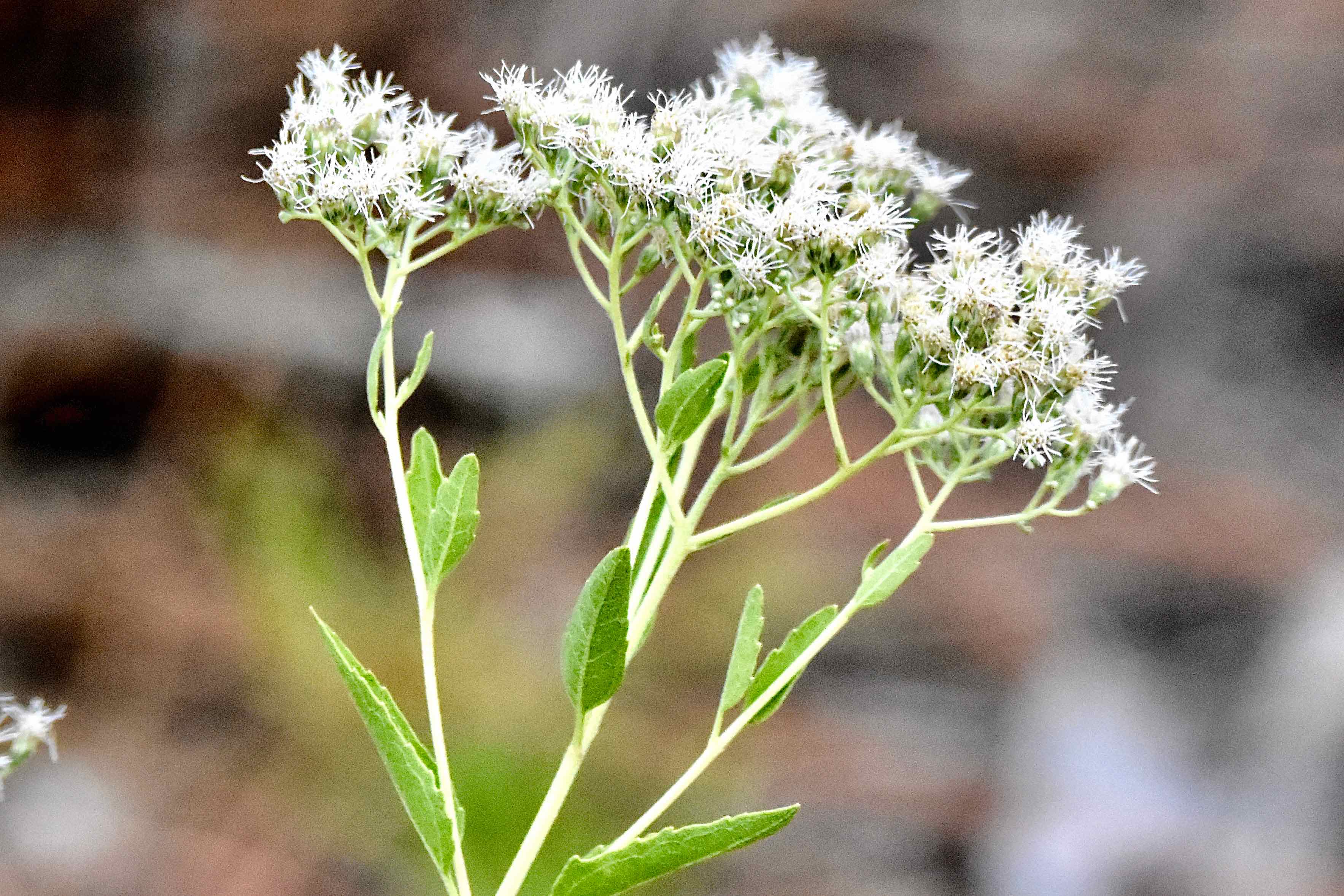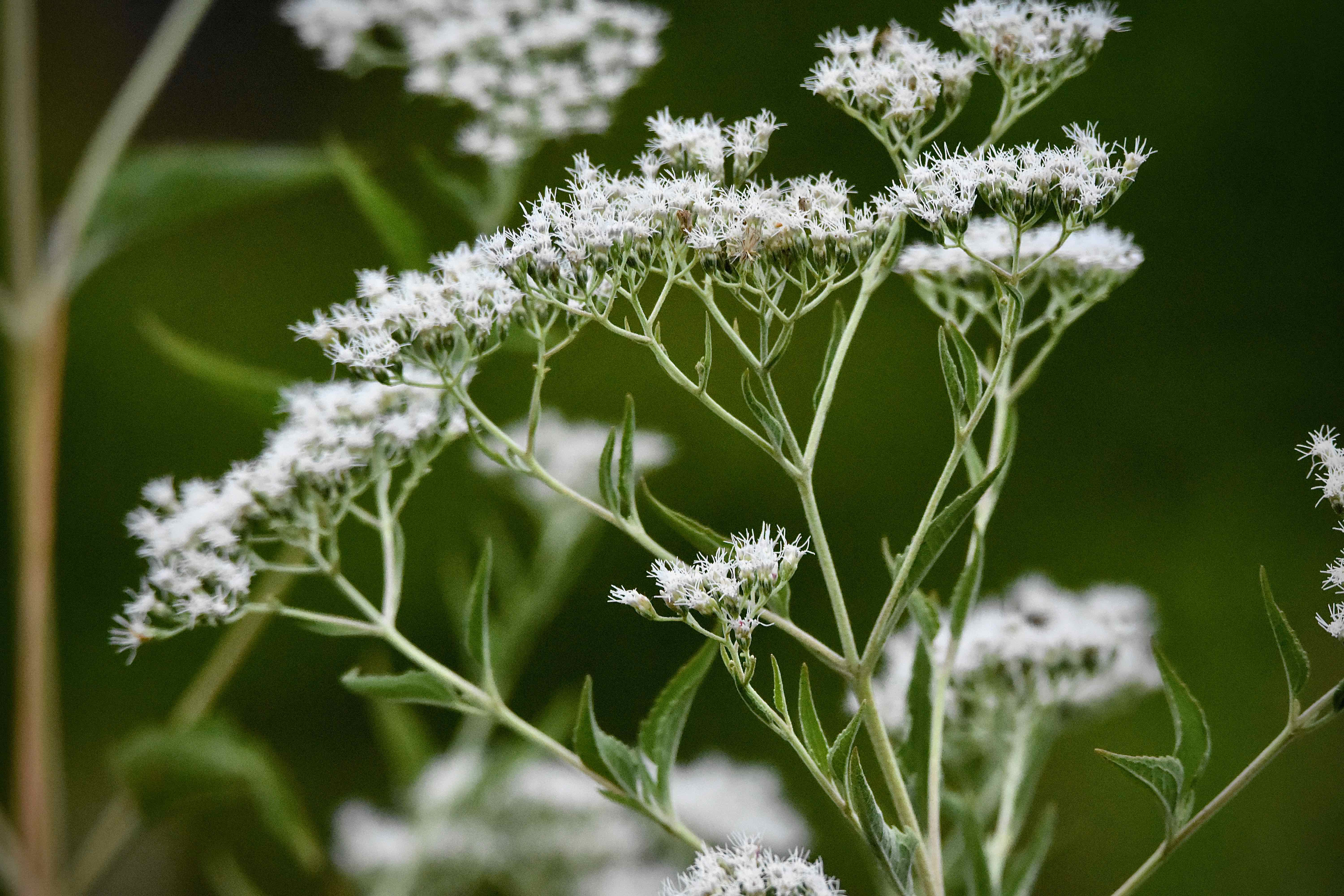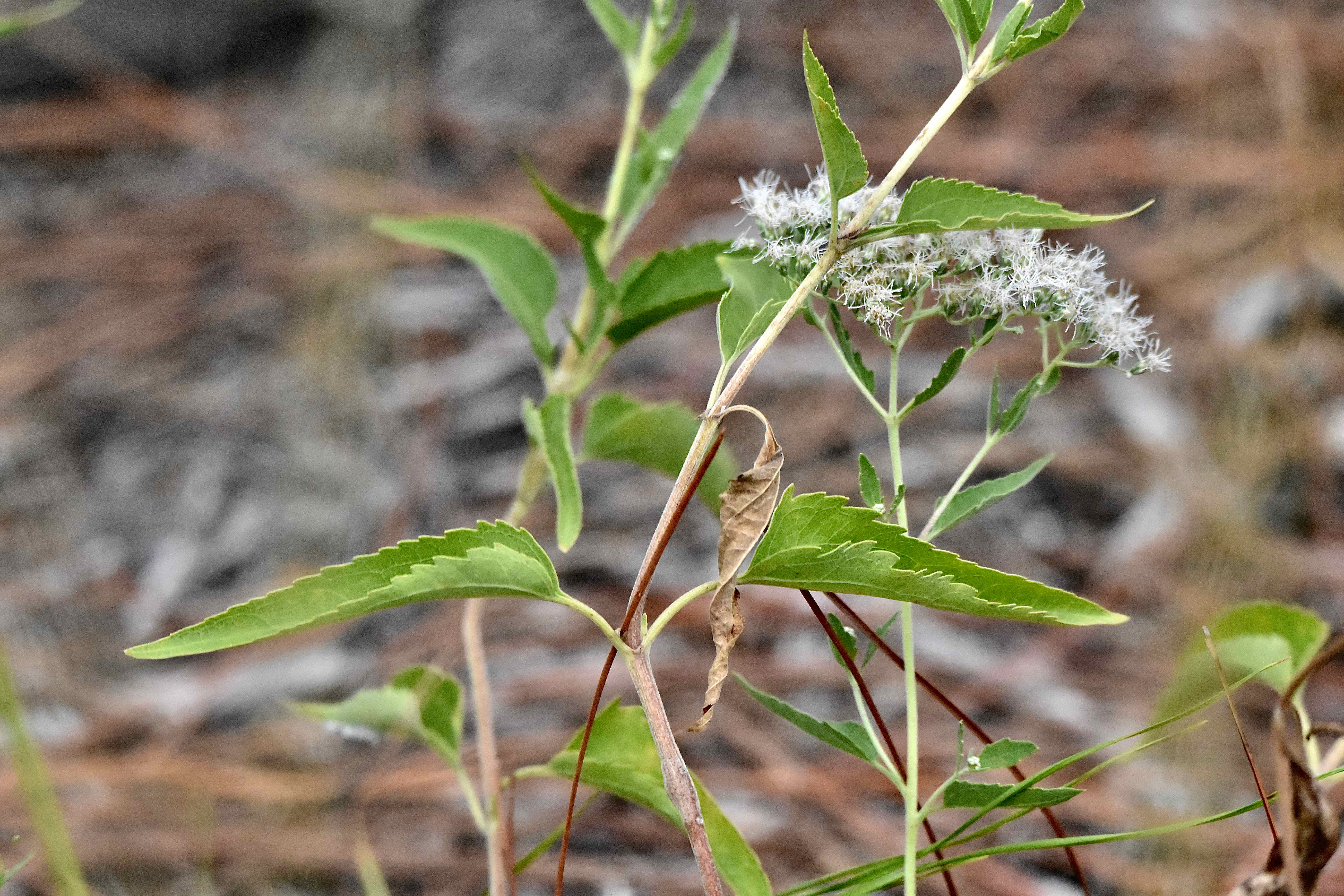
Lateflowering thoroughwort, photographed at Juno Dunes Natural Area, Juno Beach, Palm Beach County, in August 2018.
It is a bit of an odd name, lateflowering thoroughwort, Eupatorium serotinum. We're guessing here that the lateflowering part comes from the plant's habit of waiting until late summer and early fall to begin putting out flowers. Thoroughwort appears to be a corruption or perhaps an old spelling of "through," combined with wort, meaning plant.
Its scientific name is a little easier to explain: Eupatorium honors Mithridates Eupator, King of Pontas, who in 115 BC supposedly used a member of the genus as an antidote for a common poison. Serotinum means late.
Lateflowering thoroughwort is found thoughout most of the eastern and central United States, and in most Florida counties, where it is a native. It is found in open areas, both moist and dry but it also takes some shade. It usually grows singly rather than in clumps or colonies. Its flowers are small and white and lack rays or petals, but the plant puts out tons of them in small heads, which cluster at the end of stems, making the collective effect fairly spectacular. It can grow to eight feet tall, usually shorter, with a single stem and many branches; the leaves are lance-shaped and come to a sharp point at the tip. They are rough-textured with sawtooth edges, curved downward and curled inward. They are arranged opposite each other.
The flowers attract insects looking for a sweet meal, including bees, beetles, butterflies and moths. At least one species of butterfly uses lateflowering thoroughwort as a host plant. The leaves are too bitter from most browsing mammals.
Lateflowering thoroughwort is toxic, but has been used in making medicines. The Houma people of Louisiana, for example, boiled the flowers to make a cure for typhoid. The Alabama used it to relieve stomach pains. A second common name is late boneset, deriving from the use of Eupatorium plants to treat dengue fever, sometimes called breakbone fever because of the intense pain it causes.
It has a cousin, Eupatorium perfoliatum, common boneset, that was more widely used in traditional medicine to treat everything from snake bites to veneral disease to rheumatism. The two plants are close enough genetically that they will hybridize where their ranges overlap. Common boneset is not found in South Florida, however. German scientists have found that common boneset might stimulate the immune system, but we've not seen similar research concerning our guy.
Dengue fever, by the way, is a mosquito-borne disease found mainly in tropical places around the globe. It rarely occurs in the United States, where lateflowering thoroughwort and common boneset grow.
Lateflowering thoroughwort is a member of Asteraceae, the sunflower family. Other common names: tall boneset and lateflowering boneset.
Click on photo for larger image
Links for Lateflowering Thoroughwort



